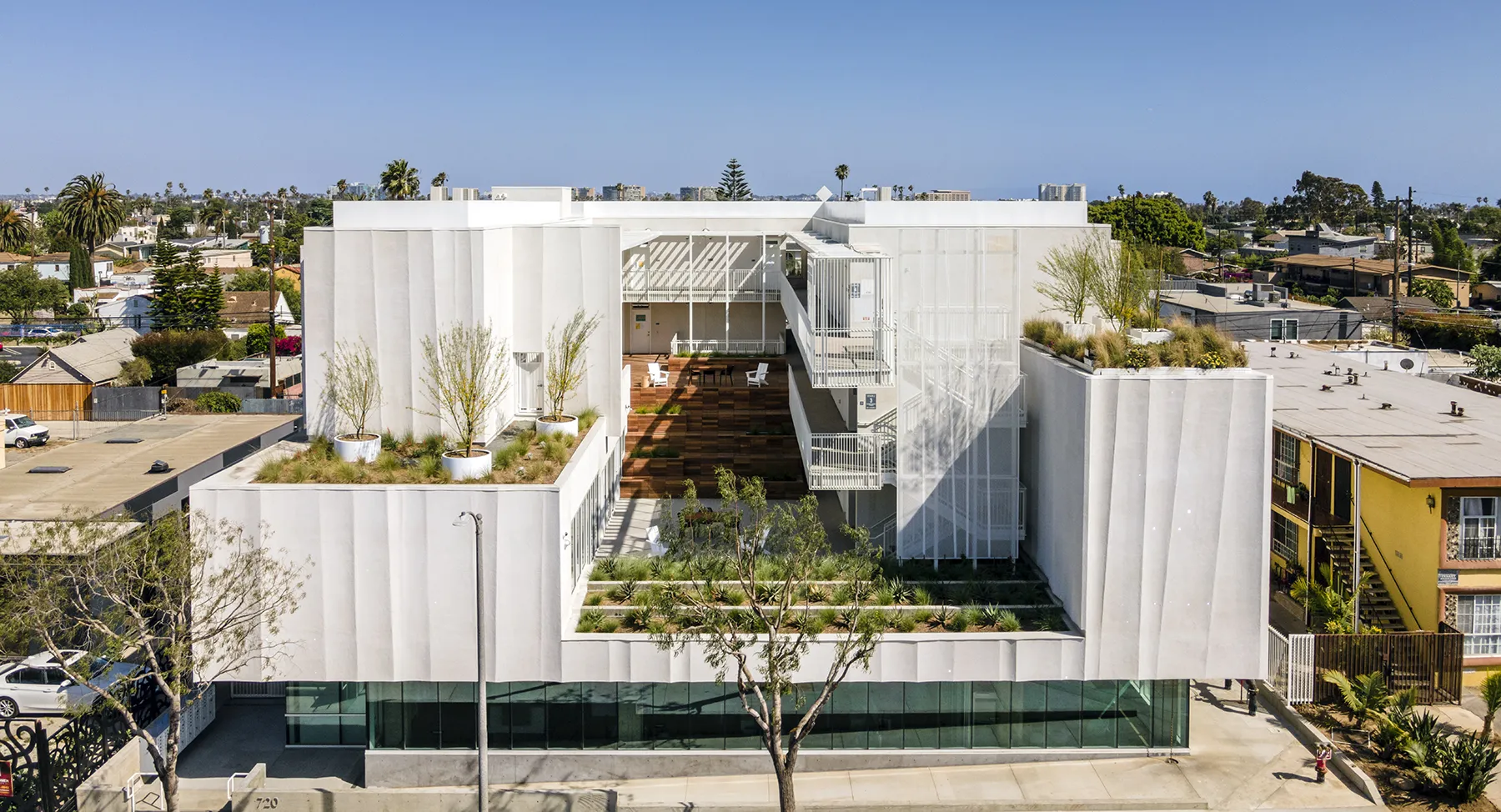The Case for Great Housing
By Frances Anderton and David Kersh for FORT:LA
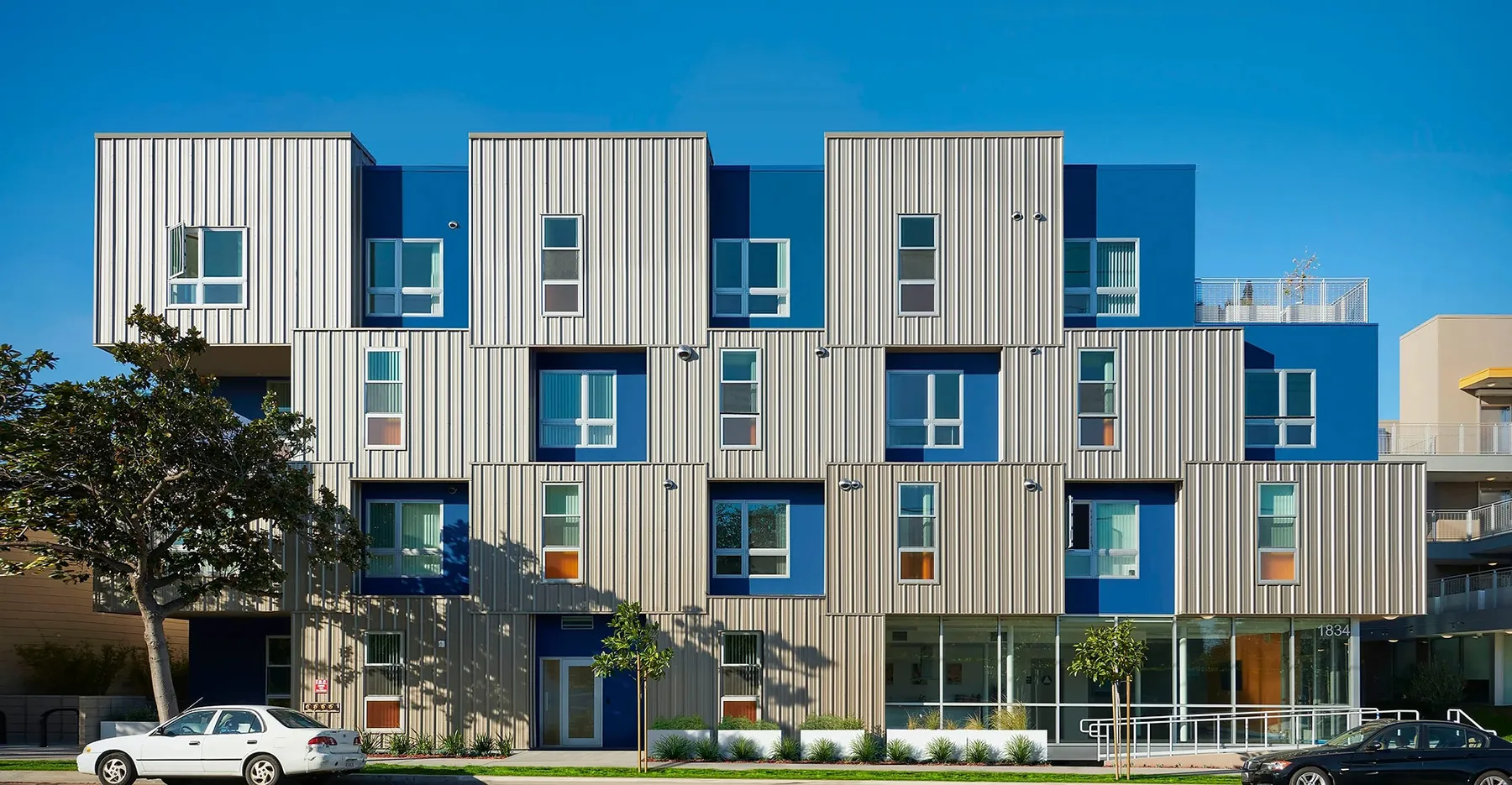
When Brenda Mendoza told an NPR reporter about her commute to work, she became the face of the housing crisis in Los Angeles today. Mendoza, a uniform attendant at a JW Marriott hotel, was living with her family in an apartment in Koreatown, where she had grown up, ten minutes from her job. The landlord raised the rent so she moved to a less costly place in Downey. When that rent rose out of reach, she moved to Apple Valley, and now gets up at 3:30am to drive 100 miles to her job, dropping off her husband and son at their jobs on the way. She did not move to Apple Valley to invest in a house she could love, following the old maxim, “Drive until you qualify.” She simply found an equally unstable, but slightly more affordable rental, hours from her workplace.
This is the California dream turned Dickensian dystopia, the outcome of the 20th century mode of land-use planning in which flowing freeways and cheap virgin land meant that housing could be decoupled from proximity to work, homeowners could sleep comfortably knowing service workers had a home, somewhere, and the LA garden city model of low-rise, mostly single family living could continue indefinitely. Now that planning model has reached the end of the road, and the region is increasingly divided into the affluent and comfortably housed, and the impoverished and unhoused, while working poor and middle income Angelenos pick up and leave. The situation is so untenable that population watchers currently project a drop in residents in California, especially from the Southland, due to factors including outmigration to more affordable housing markets. LA, the city of the future, is on a fast track to becoming a gerontocracy.
Yet, homes are being built. Apartments and condo buildings are going up in the thousands on our thoroughfares and in our downtowns. We see them on Venice Boulevard, on Lincoln, on La Brea at Wilshire, in Hollywood. Unfortunately, many of these dwellings are out of reach for Mendoza and her family. They are filled with studios and one-bedroom units, excluding young families or larger households, and they cost way more than the wages of a hotel worker can cover. Furthermore, an alarming number of them lack charm and local character, appearing like cliff faces of sheetrock and stucco, stacked over sometimes empty retail spaces, with balconies facing onto several lanes of traffic. They could be found in Anywhere, America, and they give the impression that new housing in LA today is neither affordable nor desirable. No wonder Angelenos feel baffled and frustrated, and lament: Why are the streets filled with people without shelter? Why can’t I afford a place to live? And what are these slabs of new housing and who are they for?
Amidst this bleak picture though are models of residential aspiration, diamonds in the rough: complexes of dwellings that offer long term rental affordability and stability for singles and families, that have greenery and shared and private open space, amenities from community gardens to rooftop BBQs, and architectural flourish. They are built primarily, but not exclusively, by idealistic nonprofit developers in tandem with equally utopian design teams. Sometimes they are bright new buildings modeling new technologies and styles. Or they are renovated or adaptively reused old buildings. Or they are taller, denser buildings, on thoroughfares, but their scale is handled with flair, and their location is artfully turned to advantage. They are more social, oriented toward shared space and the street, closer to transit or to workplaces; in sum, they are homes for Angelenos in the 21st century, not the last one, at a manageable price. Welcome to Awesome and Affordable: Great Housing Now.
No wonder Angelenos feel baffled and frustrated, and lament: Why are the streets filled with people without shelter? Why can’t I afford a place to live? And what are these slabs of new housing and who are they for?
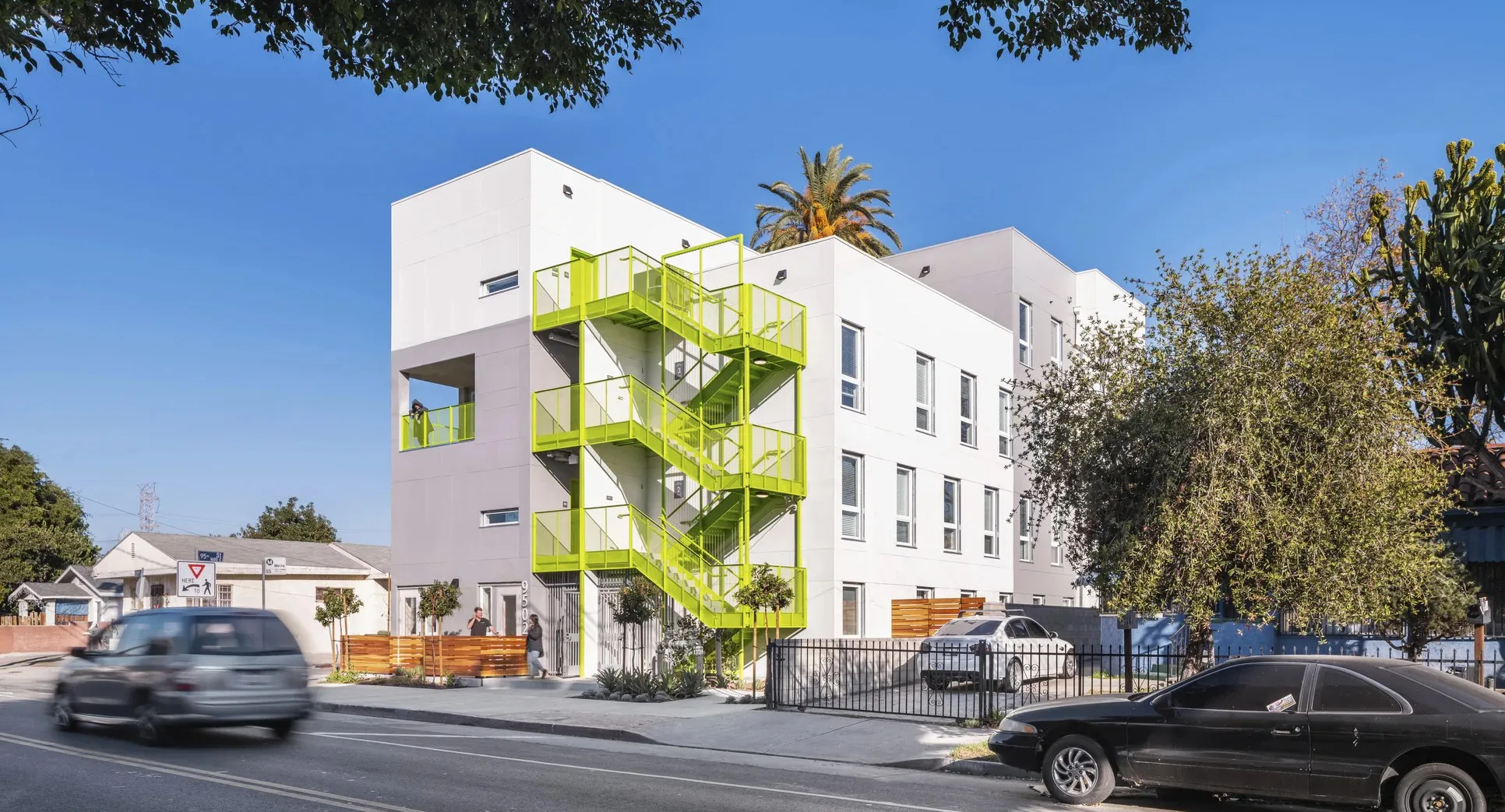
Awesome and Affordable: Great Housing Now is a yearlong, new media project aimed at advancing understanding and appreciation for affordable housing: how it’s funded, produced and designed. There is a lot that is confusing about this kind of residential development, starting with the meaning of “affordable.” You have probably read articles about the high cost of construction of housing using HHH funds or the lack of a dent in the numbers of homelessness, or even some scandalous stories about one or two bad actors in the industry. You may have wondered why a new low-income complex in your neighborhood is so much bigger than neighboring buildings. Or why it is displacing some older, rent-controlled homes. Perhaps you or a family member wants to live somewhere “affordable” but do not know how to start looking. This project aims to answer all this, and offer Hope and Tools for all those who feel like housing in LA is an insolvable mess, and that the dream that brought so many people here has simply evaporated.
This project is sponsored by Friends of Residential Treasures: Los Angeles (FORT: LA), a nonprofit organization that offers public events and trails aimed at reinforcing collective pride in our buildings while “communing with the DNA of Los Angeles,” in the words of FORT: LA’s founder, Russell Brown. FORT: LA supports research and, given the urgency of LA’s housing needs, has chosen to investigate affordable housing and unearth examples that belong in the pantheon of LA’s residential gems.
The work builds on Frances Anderton’s recent book, Common Ground: Multifamily Housing In Los Angeles (Angel City Press, 2022), which argued that to meet LA‘s housing needs in a megalopolis that has run out of space, residential options going forward will be primarily in multifamily buildings, rather than single family homes – and that this need not be a downer! Rather, builders and dwellers in Los Angeles can look no further than our own cityscape to find a legacy of lovely, connected dwellings.
However, not all of them are affordable on regular salaries today. The utterly delightful Santa Monica bungalow court home that cost peanuts to rent a few decades ago? Now you’re looking at $2300 per month for a 400 square feet “studio!” The beautifully preserved garden apartment complex built in the postwar years that once housed blue-collar workers? That’ll now cost you $3500 for a one-bed. The appealing, amenity filled, apartment building in downtown Culver City? That’ll be $6000 a month for a two-bed, thank you very much.
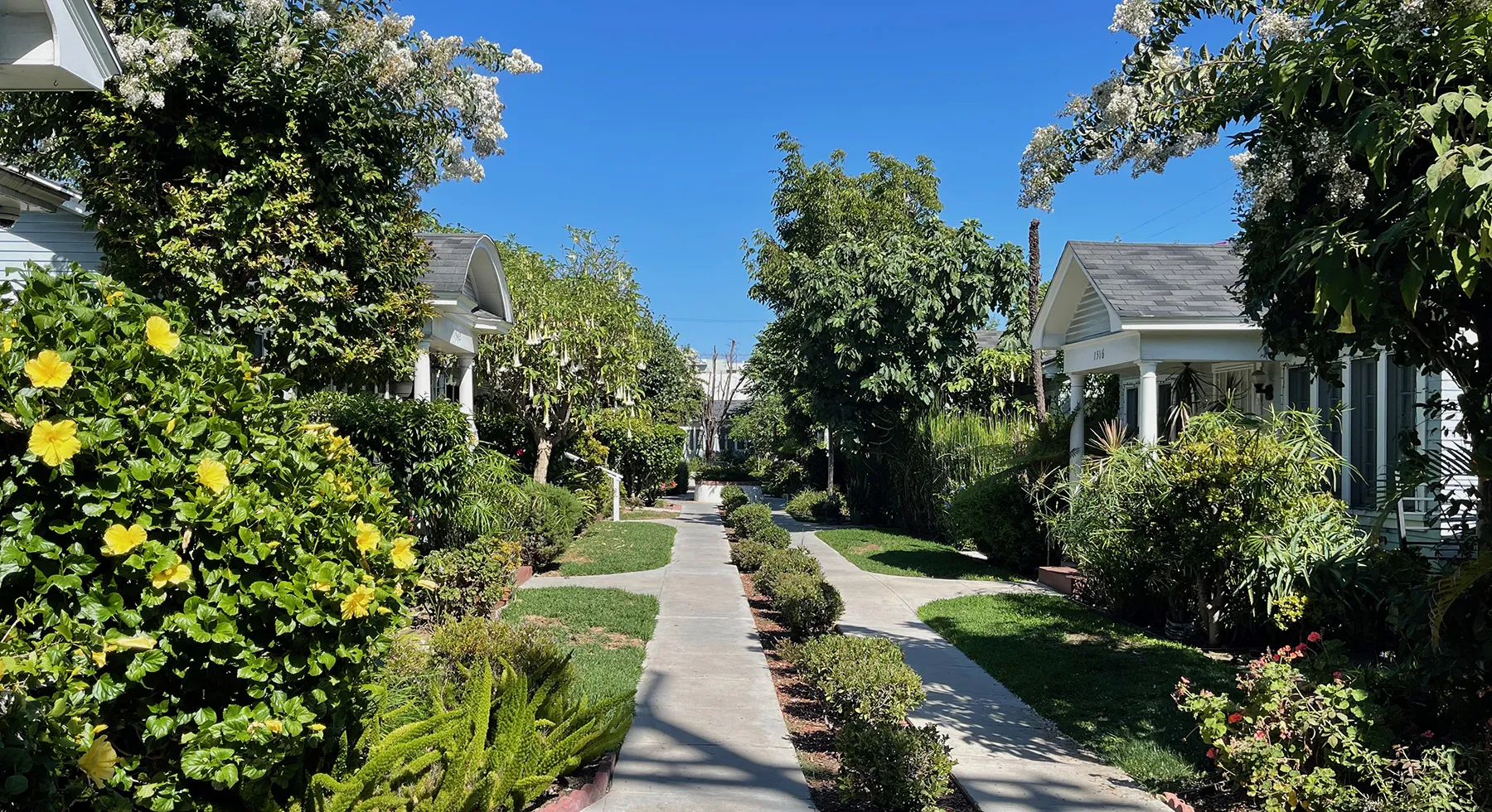
Today, according to various studies, up to 3⁄4 of renters in LA County are “rent-burdened,” as in paying 30% or more of their income on rent or mortgage payments. This is not just a California problem, but it peaks in the Golden State, and results from various factors, starting with the growing lag over the last two decades between income and rent or mortgage, due largely to the gap between housing demand and supply. Los Angeles can make the dubious claim to being the city in America with the highest home price to income ratio! Here the median household income is around $80,000 while the median home price is almost $1 million.
Those who are rent-burdened include the working poor — hotel and restaurant workers, care staff, shop assistants, preschool teachers — and the workforce in the “missing middle:” teachers, bus drivers, fire fighters, cultural workers, hospital orderlies. They are the people who keep the region ticking along yet cannot compete in the regular market for housing. Then there are those squeezed out through various circumstances into living on the streets, and now numbering, at a recent count by the Los Angeles Homeless Services Authority, some 75,000 in LA County and more than 45,000 in the City of Los Angeles. And the main reason housing has become such a huge challenge for all these groups is because there is so little of it at prices below market rate.
Today, according to various studies, up to 3⁄4 of renters in LA County are “rent-burdened,” as in paying 30% or more of their income on rent or mortgage payments. This is not just a California problem, but it peaks in the Golden State, and results from various factors, starting with the growing lag over the last two decades between income and rent or mortgage because of the gap between housing demand and supply.
Intervention in the market
This means that most affordable options result from some kind of intervention in the market (just as home-ownership gets a helping hand from Uncle Sam in the form of tax deductions, infrastructure and other generous assistance). A primary form of intervention is rent control or stabilization, a means to contain rents and provide long term housing stability to residents. Not surprisingly, this is constantly resisted by property owners, who have created workarounds like the Ellis Act and Costa Hawkins (see, Playbook).
So over the decades, housing policymakers have tried to figure out ways to deliver housing outside of market pressures. That has produced public housing, fully owned and maintained by municipalities (such as Jordan Downs; see July’s “Awesome”), aimed at very low-income people, and subject to political winds over the decades. Right now the notion of government-owned housing, sited on public land (like Isla Intersections, below, explored in detail in our June “Awesome”), is enjoying a revival of interest, as housing experts look to the model of Vienna, where 60% of residents, at a mix of income levels, live permanently in well-managed, highly affordable social housing.
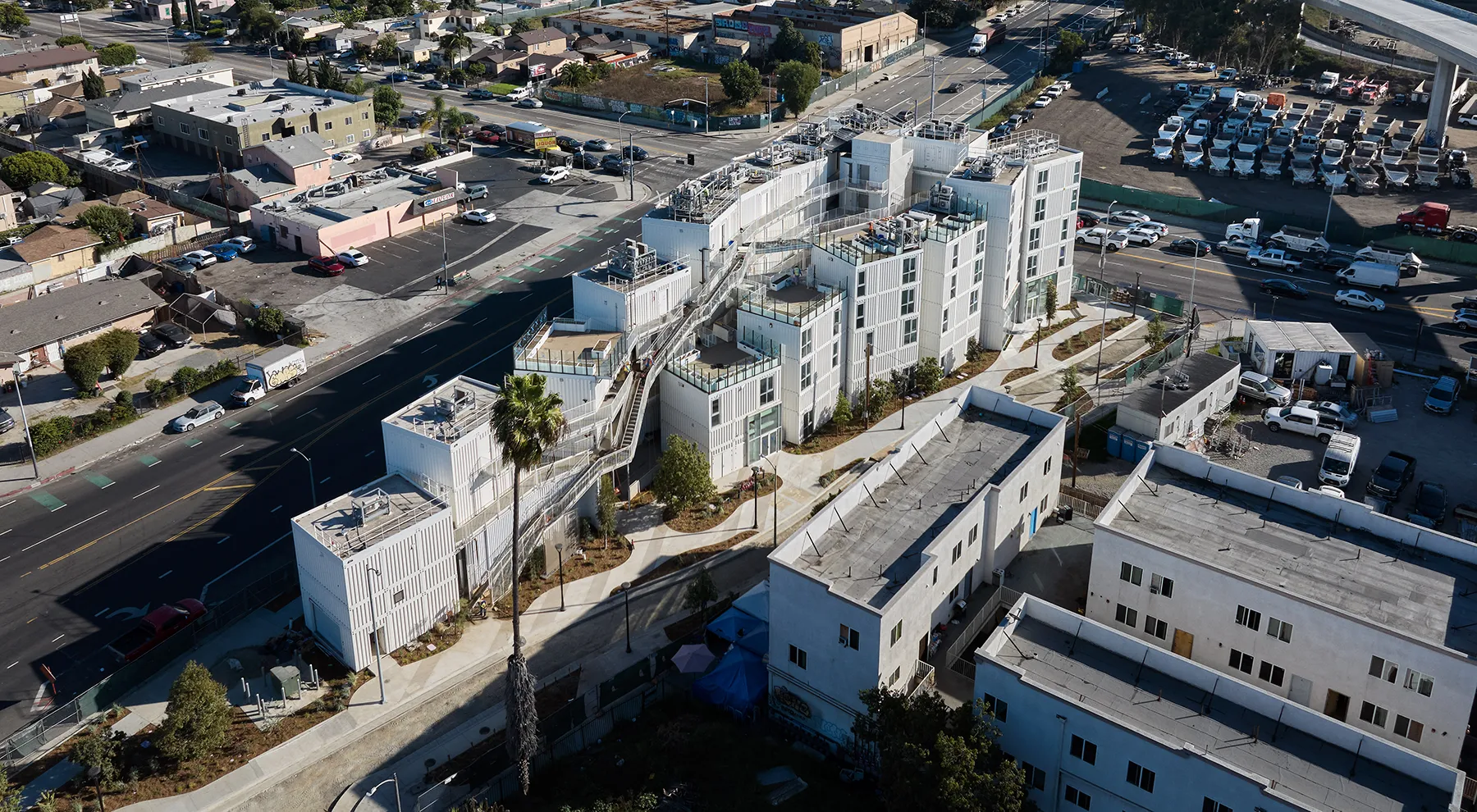
The primary option in America today is subsidized housing, often called Affordable Housing, produced by nonprofit developers using tax credits and other funding streams to provide dwellings at subsidized rents for people below a certain income threshold. This is confusingly distinct from homes that are lowercase ‘a’ “affordable,” as in simply rent or housing that you can afford, on your paycheck. Sometimes these subsidized homes are aimed at specific demographics, like veterans or seniors or the unhoused. Sometimes these homes come with wraparound “supportive services,” for people with mental or physical disabilities. They are “deed-restricted,” meaning they have a covenant attached that requires the dwellings to remain affordable for a specified number of years, usually at least 55.
Nonprofit developers of Affordable Housing emerged in the 1960s as large scale investment in public housing waned, and expanded during the Reagan years. They have moved center stage in recent years, with the state requiring cities to meet their “Regional Housing Needs Allocation (RHNA)” of housing; the City of LA is meant to zone for more 450,000 new units of housing, of which 184,721 units must be affordable to lower income households (also known as, Very Low and Low). Production of Affordable Housing has been given an extra push from the state and municipalities with multiple bills and incentives designed to streamline production, although meeting need remains very challenging.
Another approach to achieving affordable new dwellings is to incentivize or apply mandates to the private sector.
One strategy is Inclusionary Zoning, whereby market-rate developers are obligated by municipalities to provide some lower-rent units. Cities establish percentages, typically around 15%, and then developers figure out how to make them pencil out. Sometimes the subsidized rentals are in the same building as the market rate ones (see The Charlie, our July “Awesome”) and are exactly the same. Or builders might seek creative ways to distinguish between the income levels, from a change in ceiling heights to different material choices for countertops and balcony rails. For-profit developers can choose to put the affordable units in a separate building altogether, and make a deal with a nonprofit developer to build them. Cities also incentivize market-rate developers to include a percentage of affordable units by allowing extra height, density, set-back concessions and incentives. This is the case in Los Angeles, which uses a Transit Oriented Communities (TOC) Incentive Program instead of Inclusionary Zoning to promote more affordable housing (see, Playbook) without a mandate.
Another strategy is Opportunity Zones, wherein several blocks in a neighborhood that could benefit from an injection of jobs and investment are singled out for tax relief and financial concessions to stimulate development by private developers. This approach is exemplified in Project Florence, below, built by SoLa Impact, a private development company. Cities ease the way to affordability by undoing barriers that slow development and increase costs (see, Playbook).
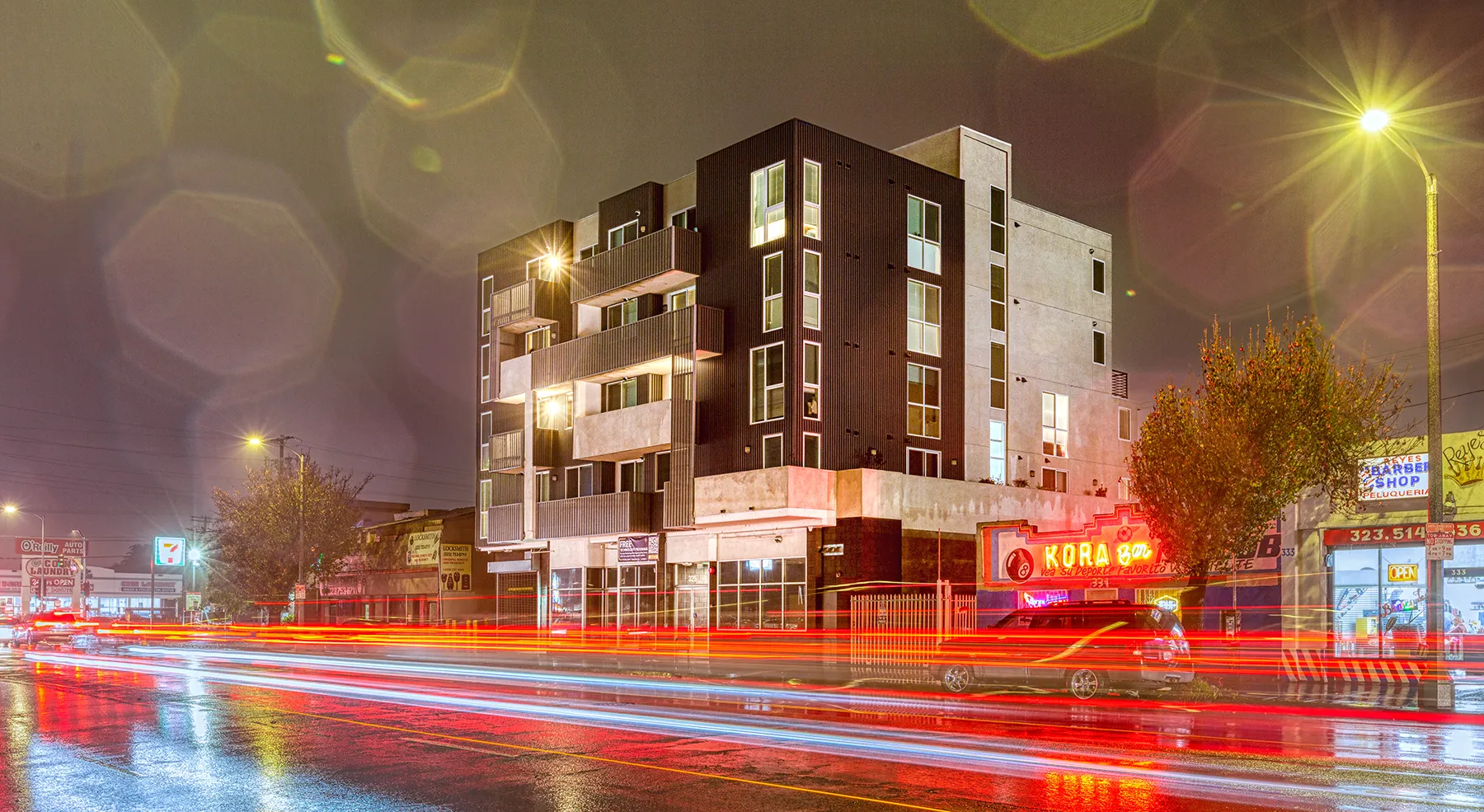
Some development and design teams aim high — architecturally, urbanistically and socially — in all of these categories, but particularly in the Affordable Housing arena, where you find a group of mission-driven nonprofit developers and designers. These teams “are not only socially responsible, but they deeply care about Los Angeles, as a city, as a place to live, as a place to raise children,” in the words of Cristian Ahumada, whose company Holos Communities has worked with inventive architects such as Lorcan O’Herlihy and his team. Together they created Isla Intersections, above. “In this work, in this partnership, we vision-share in trying to tackle the variety of needs that Los Angeles has, and it’s a beautiful thing,” says Ahumada.
The challenges to affordable housing production
The case for beauty Affordable Housing faces many challenges however, starting with resistance from people living close to a designated site, who worry about increased density and traffic and fear that low-income renters will negatively impact their communities and home values. Taxpayers complain about the unaffordable price of Affordable Housing (at construction prices of a much-quoted $800,000 per unit). These numbers frustrate the nonprofit developers themselves, who grapple with a web of constraints that raise costs, including multiple funding streams with carrying costs, conditions attached to public financing including mandatory prevailing wage, expensive land and materials, and rising insurance rates. Managing supportive services for residents with substantive physical and mental health challenges brings added responsibilities and costs; this was sadly illustrated by the implosion of venerable Skid Row Housing Trust in 2023, leaving 29 untended buildings, mounting unpaid bills, and, reported the LA Times, “a trail of disillusioned former employees.”
Some architects of subsidized housing also chafe at limitations on planning and design imposed by funders, from mandated bedroom counts to “enhanced” accessibility in LA city-funded projects, which goes beyond the standards of ADA (Americans with Disabilities Act), imposing, for example, spatial requirements for bathrooms that mean the other living spaces have to shrink. The designers’ creative workarounds will be shown in our Monthly “Awesome” case studies.
Then there is the issue of unattainability. Getting a place in a stabilized rental building is literally like winning the lottery. Thousands put their names on lists for these rentals; few get a slot. For example, 8,000 people applied for a slot at Vista Ballona, a 50 unit, 100% Affordable building opened in Mar Vista in 2022 (see, Awesome Building, January). A family like Mendoza’s might wait years for a slot to open up. Meanwhile, the funds available cannot catch up with need. In late 2023, the State of California’s Housing & Community Development Department offered $576 million for nonprofit development, but there were so many projects needing money that the funding was oversubscribed 10-1.
All these challenges prompt for-profit developers to argue that housing would be cheaper and easier to build in the free market, if cities got rid of red tape and loosened zoning. Such housing, however, typically comes without long-term rental stability for tenants, is rarely achievable in high opportunity areas due to very high land costs, and can lack the design and social ambition of the nonprofit developer driven housing. Besides, municipalities and voters persistently resist efforts to streamline housing, as shown when Mayor Bass introduced Executive Directive 1, a directive aimed at expediting 100% Affordable Housing by getting rid of red tape and giving developers exemptions from height limits and open space and setback requirements. Almost immediately, voters pushed back against it (see the FORT public debate, ED-1: Friend or Foe?) and now ED-1 has been weakened, slowing the pipeline of projects.
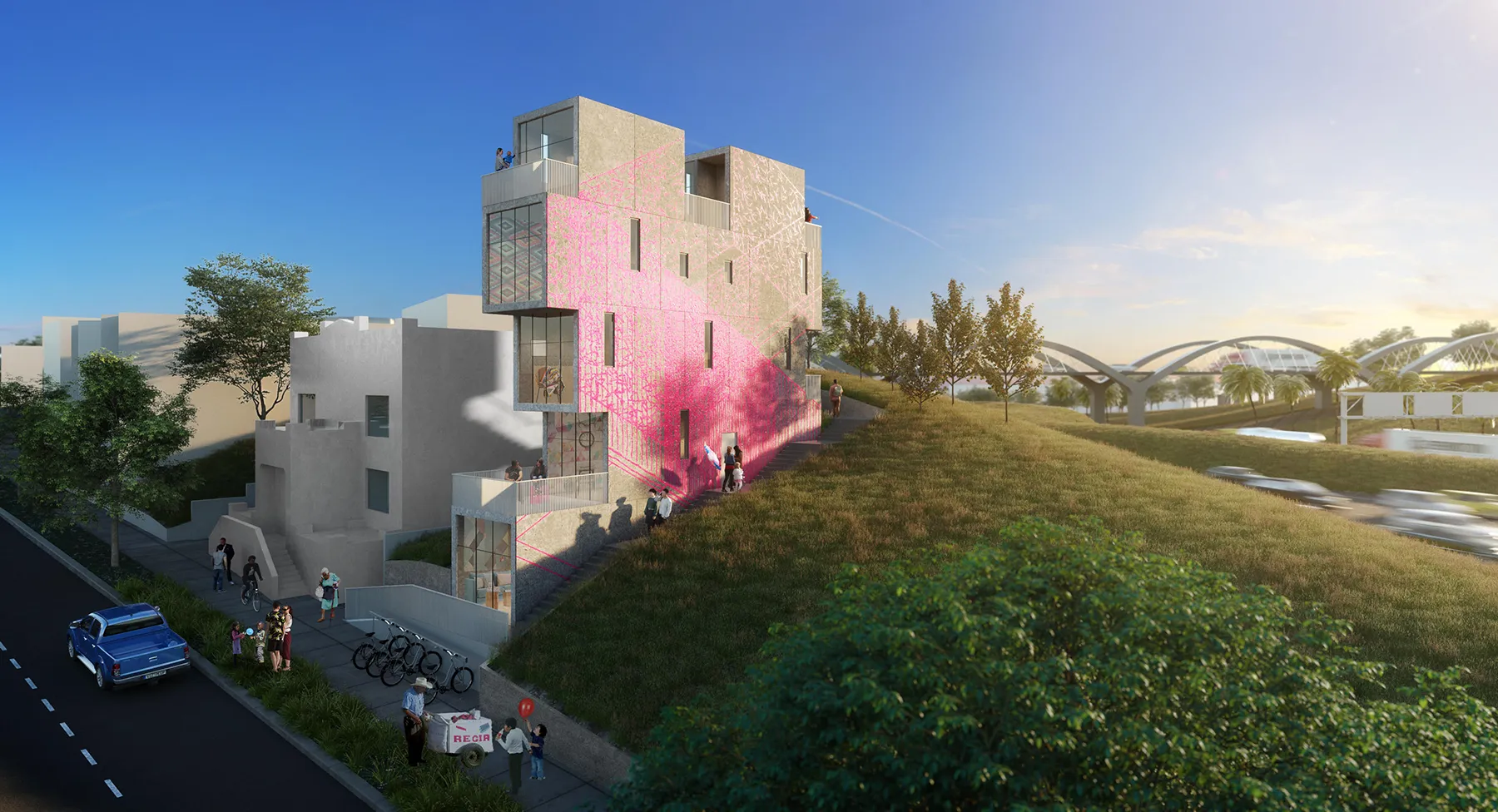
Awesome and Affordable argues that it is not enough to simply create units of housing with technocratic efficiency (though efficiency is welcome). They should be the best they can be as well. Housing is home and hearth; it is where we spend a vast part of our time (time that has been amplified since the pandemic for many) and it is an expression of our civilization and values.
The income restriction for subsidized housing also shuts the door on many in need. Subsidized housing is typically open to people earning 30% to 60% or sometimes 80% of the area median income (AMI). In California the median income is around $60,000 for a single, $100,000 for a family of four. This means that the formerly unhoused and working poor can apply for a slot but essential workers like teachers cannot. So, like Mendoza, teachers are driving hours each day to come instruct our children. This is prompting some employers such as Los Angeles Unified School District (LAUSD) to partner up with developers to build housing for their employees on land they own.
Some housing researchers raise other concerns. They argue that limiting “100% Affordable” housing to low-income people concentrates poverty in the manner of public housing projects built in the past. This is unlike, say, the Vienna social housing model, which mixes up economic levels. The counter from Affordable Housing developers is to push for more of this housing in high opportunity neighborhoods rather than parking it in jobs deserts, where land is cheaper.
This brings up the issue of renting versus owning. A growing number of housing experts and activists believe that stable rental housing for life – which is becoming the new reality for a majority of Americans – is an imperfect fix in an economy that vastly rewards home ownership. Some argue that subsidized rental housing only perpetuates the divide in inter-generational wealth between whites and people of color already caused by segregationist housing policies over the last century. The other potential fix is to make renting more stable and equitable. Affordable Housing developers aim to contain rents, for life. Meanwhile, experts are looking at how to create equity opportunities through strategies like rent-to-buy and limited equity co-ownership, while arguing that ones home should not have to be a primary source of wealth.
The case for beauty
Finally, there is the urban impact of the surge of affordable (and market rate) housing coming to our streets. Much of it is centered on commercial boulevards and locations close to mass transit. This is largely because apartments are excluded from the two-thirds of residential land in the County that is zoned R1, or single family only (plus ADUs); in an ideal world, new housing would be spread more equally across residential zones. This development on thoroughfares is intensified by recent state laws like AB 1763 (see, Playbook) which allows developers of 100% affordable housing an unlimited density bonus, along with various waivers from code restrictions, such as open space and set back requirements — namely, the elements that enhance qualify of life. This was true too of ED1, above. Eduardo Mendoza, Policy Director at Livable Communities Initiative, noted that “developers found they could go into pieces of land in lower market areas and create a beehive of multiple tiny dwellings without the essential elements that make such housing livable: generous open space, greenery, stepped levels and view corridors. These are, says Mendoza (no relation to Brenda Mendoza), “SRO units, essentially, but developers can price them at a level that is pretty near market rate.”
Awesome and Affordable argues that it is not enough to simply create units of housing with technocratic efficiency (though efficiency is welcome). They should be the best they can be as well. Housing is home and hearth; it is where we spend a vast part of our time and it is an expression of our civilization and values.
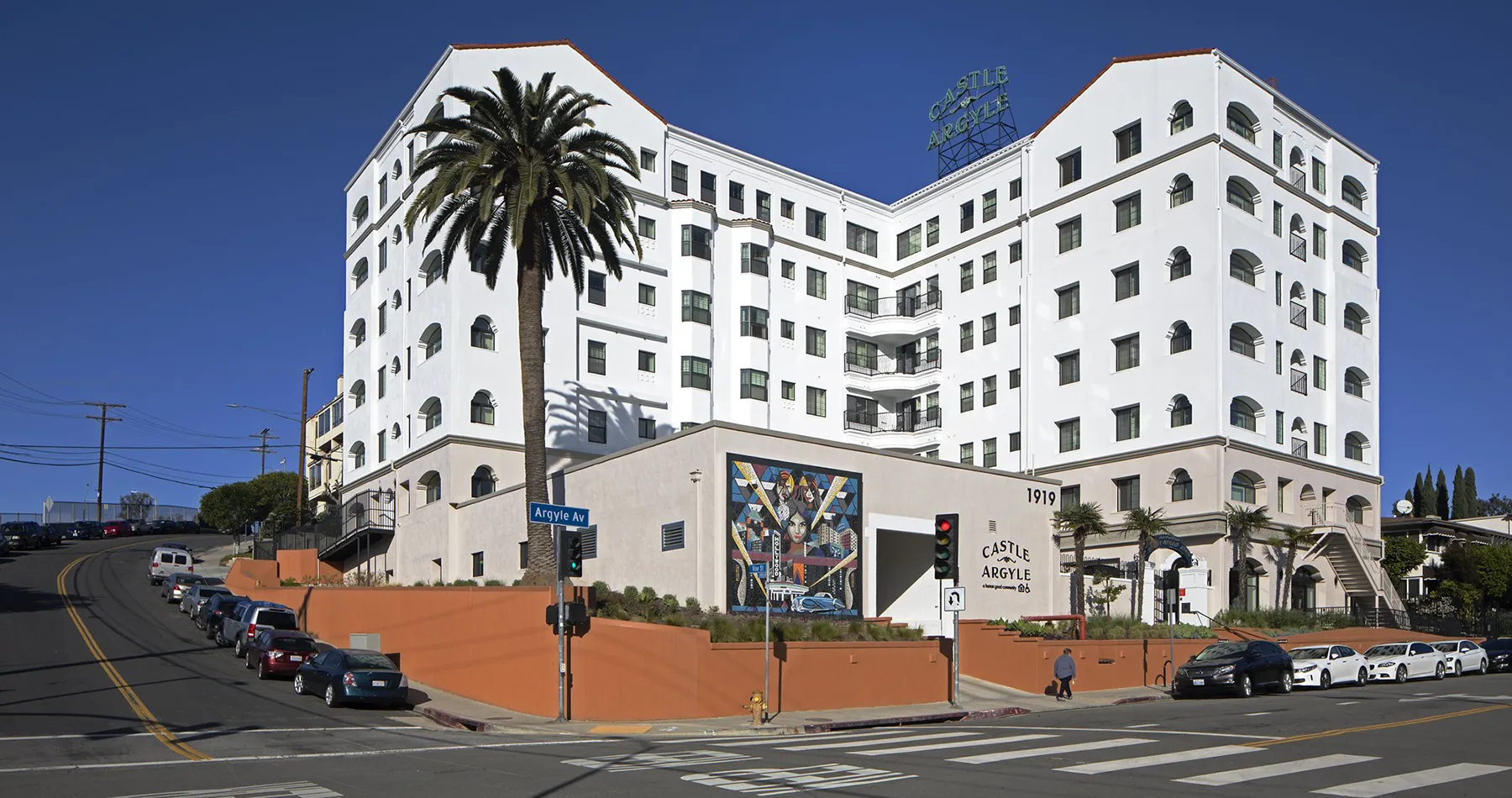
Hope and tools
Awesome and Affordable consists of several parts: first, this introduction; then twelve-plus “awesome” projects, modeling a strong solution to a big challenge in affordable housing, such as doing density well, or using modular construction highly effectively to streamline costs without losing livability.
“Awesome” means many things, but the common thread here is a housing complex that through good design and thoughtful care becomes special, which is quite an achievement given a multiplicity of limitations attached to the construction of affordable housing. It is a retrofitted classic bungalow court. It is the public housing that has been repurposed with community enhancements including murals of the residents. It is the place that makes the best of a very bad lot: the housing close to the freeway that absorbs pollution with abundant greenery, and keeps car noise at bay with clever design strategies. It is a densely packed, multi-story, multi-unit building that softens its impact on the cityscape with stepped back levels and careful interior planning to allow in natural light and air. It is a mixed-use building whose ground level retail spaces serve as small business incubators for the residents, offering economic opportunity to the tenants and an amenity to the surrounding neighborhood. Essentially, it is great design and livability that have been forged despite extreme constraints. This is not housing in the form of massive scale, utopian urban renewal. It is infill, project by project, but adds up to a new vision of housing.
We also provide you with Form Follows Rules, a Housing Terminology Playbook of terms unpacking all the policies, laws and players that produce our housing. Home in Los Angeles looks and costs the way it does thanks to a complicated ecosystem of laws, codes, costs, politics and policies, involving an evolving cast of characters seeking influence. They speak a language full of jargon and acronyms. After all, the following is the kind of thing you might read or hear in a discussion about housing:
“SCAG’s RHNA means cities have to produce a Housing Element stating how many units they will produce. A percentage must be affordable, which is costly and complicated to build so SCANPH has pushed for ULA to solve some of the issues with HHH. Cities are asking for inclusionary zoning in TOC so developers want density bonuses which are making buildings so high that LCI would like to see some lower density, missing middle housing but that requires Vertical Access Reform.”
Did you understand any of that? Very likely not. Does it have anything to do with the life and soul of buildings and the people who live in them? Hard to tell. Having the tools to navigate all of this helps figure out how to make housing that does nourish life, soul and the cityscape. If you understand the machinery and the terminology behind the buildings, it’s easier to chime in confidently in discussions about them, perhaps to speak to your local representatives, and to support the kind of housing you like.
Finally, Awesome and Affordable hosted public events on the theme of affordability in housing in Los Angeles: a symposium on Housing Vienna: Lessons For Los Angeles, and then ED-1: Friend or Foe?.
Awesome and Affordable is not a directory of available low-cost homes, though you can find an Affordable and Accessible Housing Registry at the City of Los Angeles (see Playbook). It is an explainer and an enticement, an intended source of Hope and Tools aimed at Angelenos who care deeply about housing availability, and are concerned with how our region is developing in the 21st century.
We believe that housing should not be demeaning, nor should it diminish our cityscape. This time of crisis and opportunity in Los Angeles is the moment to demand beauty and humanity in design, at whatever income.
Reframing affordable housing
When FORT: LA’s Russell Brown threw out the draft name for this research, “Awesome and Affordable,” we initially thought it would be a placeholder until we came up with something more serious. To append “awesome” to “affordable” somehow seemed a little unseemly, a little frivolous, like saying “playful poverty.” But the more we ran the phrase by people and saw them smile, we realized it was exactly the right title, because it conferred the notion of awesomeness on an area of housing that is often treated as an irritant. We believe that housing should not be demeaning, nor should it diminish our cityscape. This time of crisis and opportunity in Los Angeles is the moment to demand beauty and humanity in design, for whatever income, as modelled in Rose Apartments, by Brooks + Scarpa, below (December’s Awesome building.) Awesome and Affordable: Great Housing Now shows just how.
